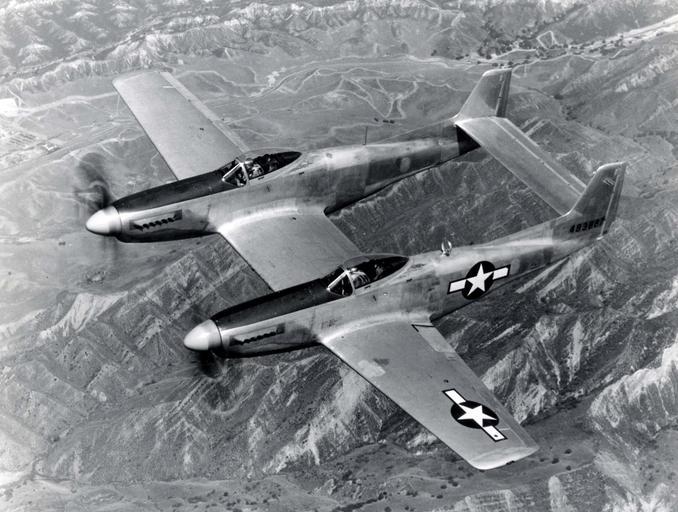MAKE A MEME
View Large Image

| View Original: | NAA_XF-82_Twin_Mustang.jpg (1800x1360) | |||
| Download: | Original | Medium | Small | Thumb |
| Courtesy of: | www.flickr.com | More Like This | ||
| Keywords: naa north american northamerican twin mustang f-82 f82 xf-82 xf82 usaf fighter aircraft airplane vehicle blackandwhite outdoor black and white North American XF-82 (S/N 44-83887) in flight. (U.S. Air Force photo) The F-82 was the last propeller-driven fighter acquired in quantity by the USAF. It appears to be two Mustang fuselages on one wing, but in reality it was a totally new design. Its purpose was to provide a fighter carrying a pilot and co-pilot/navigator to reduce fatigue on long-range bomber escort missions. Delivery from production did not begin until early 1946, too late for World War II. After WWII, radar-equipped F-82s were used quite extensively by the Air Defense Command as replacements for the P-61 night fighter. During the Korean Conflict, Japan-based F-82s were among the first USAF aircraft to operate over Korea. The first three North Korean airplanes destroyed by U.S. forces were shot down by all-weather F-82G interceptors on June 27, 1950. North American XF-82 (S/N 44-83887) in flight. (U.S. Air Force photo) The F-82 was the last propeller-driven fighter acquired in quantity by the USAF. It appears to be two Mustang fuselages on one wing, but in reality it was a totally new design. Its purpose was to provide a fighter carrying a pilot and co-pilot/navigator to reduce fatigue on long-range bomber escort missions. Delivery from production did not begin until early 1946, too late for World War II. After WWII, radar-equipped F-82s were used quite extensively by the Air Defense Command as replacements for the P-61 night fighter. During the Korean Conflict, Japan-based F-82s were among the first USAF aircraft to operate over Korea. The first three North Korean airplanes destroyed by U.S. forces were shot down by all-weather F-82G interceptors on June 27, 1950. | ||||